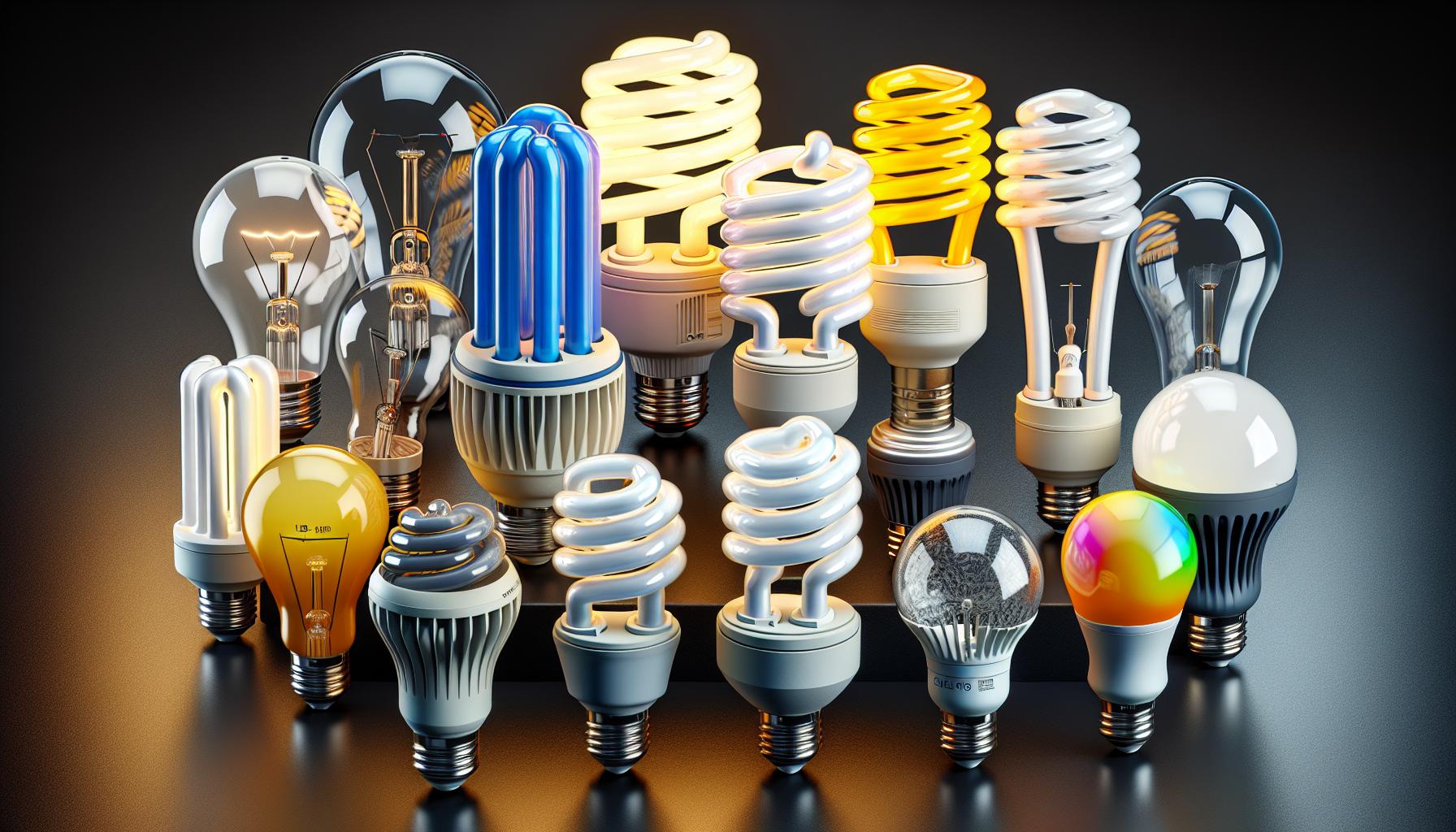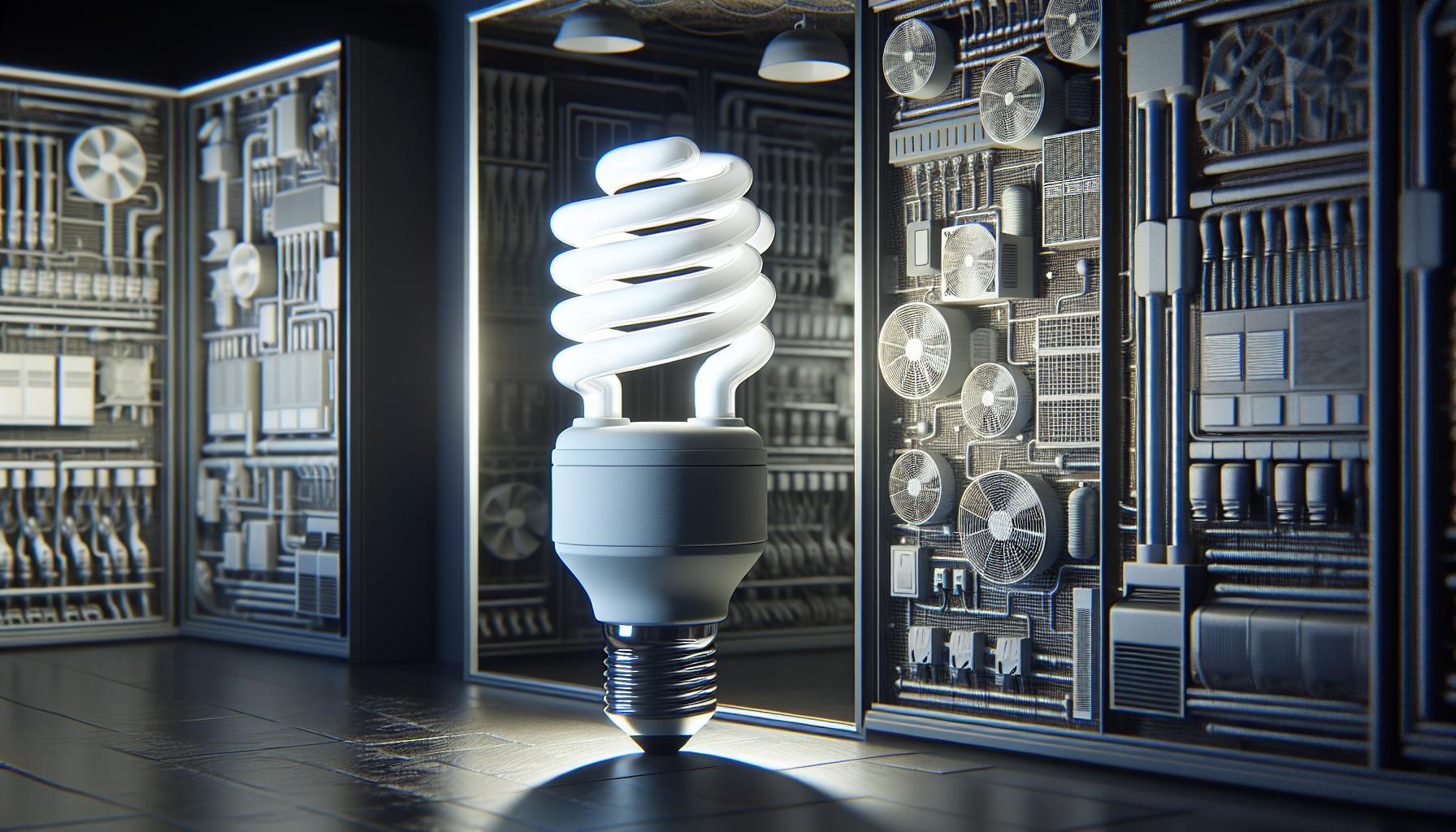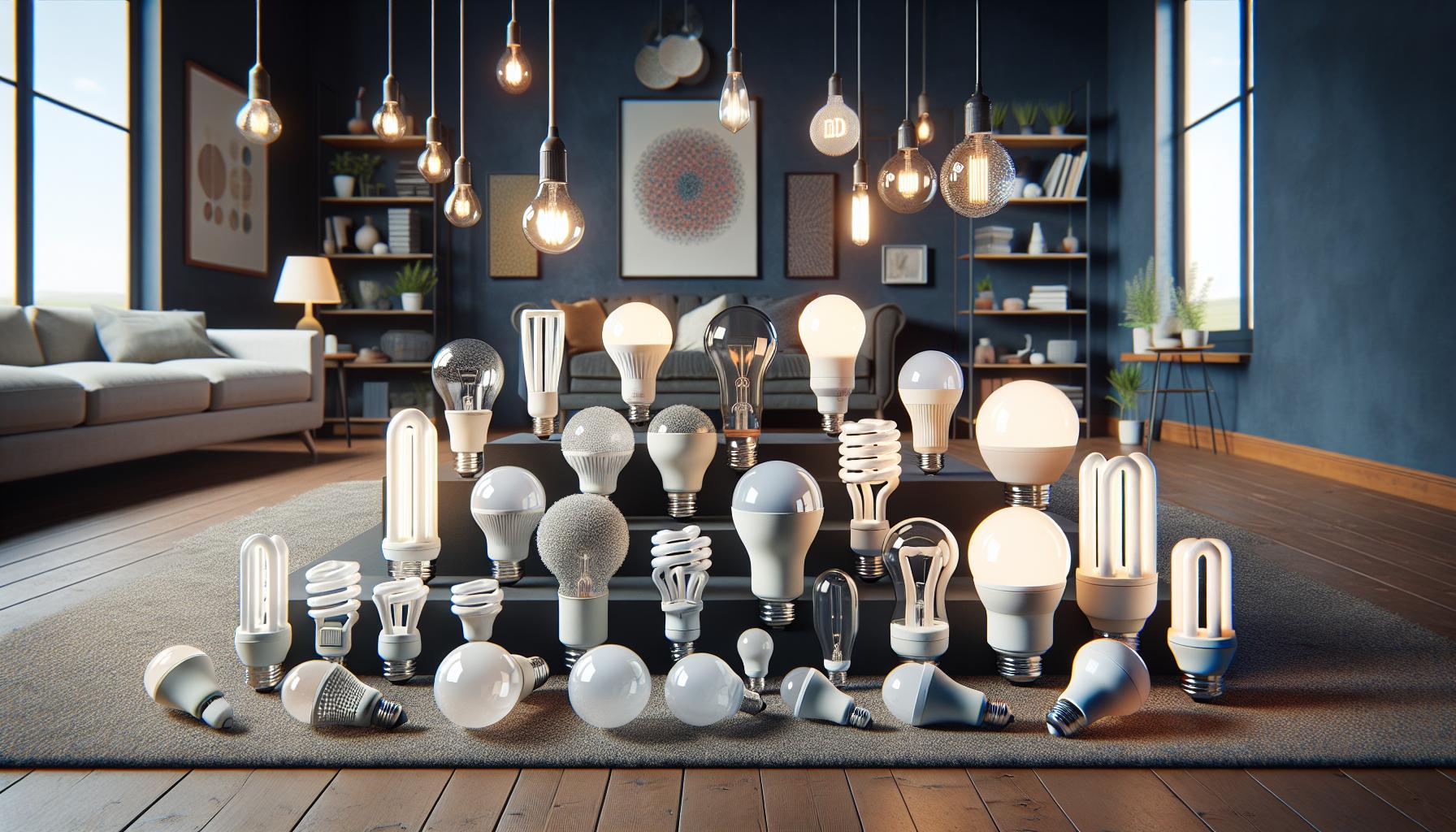Ever wondered why you’re replacing light bulbs more often than you’d like? It’s a common frustration, and you’re not alone in thinking that these little beacons of light should stick around a bit longer. The truth is, there’s a whole host of reasons why light bulbs fizzle out sooner than we expect.
From the type of bulb you’re using to how you’re using it, several factors play into their surprisingly short lifespans. You might be surprised to learn that everything from the materials used to the very air around us can affect how long your light bulbs last.
Let’s shed some light on the mystery behind these essential, yet ephemeral, household items. As you read on, you’ll discover the ins and outs of light bulb longevity and what you can do to keep the lights on longer.
Factors Affecting Light Bulb Lifespan
As you delve into the nitty-gritty of light bulb longevity, you’ll find that there’s a slew of factors impacting how long your bulbs light up your life. Understanding these could be the key to extending your bulb’s performance.
Voltage Fluctuations play a pivotal role. Power surges can stress the delicate filaments in incandescent bulbs or the intricate electronics in LED variants. Ensuring your home’s wiring is up to snuff could mitigate some of these issues.
Next, consider the Build Quality of the bulb. Premium bulbs often utilize superior materials that can withstand higher temperatures and electrical variances. Investing a few extra bucks might save you replacements in the long run.
Usage Patterns matter. Frequently flipping your lights on and off can shorten the lifespan of a bulb due to the initial surge of electricity causing more wear and tear, particularly for incandescent bulbs. Opt for leaving them on if you’ll be back in a jiffy.
- For instance, LED bulbs might tout an impressive lifespan, generally:
- Traditional Incandescent: 1,000 hours
- Halogen: 2,000 hours
- CFL: 8,000 hours
- LED: 25,000 hours
But all those hours can dwindle if your bulb is in an Improper Fixture. Light fixtures that trap excessive heat are especially harmful to bulb longevity. Make sure your bulbs are in fixtures that allow for appropriate ventilation.
Lastly, ponder the Environment. Humidity, temperature extremes, and even the amount of dust can affect bulb performance. Outdoor bulbs face the elements and require specific types that can handle what Mother Nature throws their way.
By paying attention to each of these elements, you can enhance the lifetime of your bulbs and brighten your space for longer without the hassle and cost of frequent replacements. Whether you’re patching up that old lamp or installing efficient LEDs throughout your home, these tips will shine a light on lasting brilliance.
Types of Light Bulbs and Their Lifespan
As you delve deeper into the world of lighting, you’ll discover that not all light bulbs are created equal. The type of light bulb you choose plays a significant role in its overall lifespan.
Incandescent Bulbs
Your classic incandescent bulbs are akin to the friendly old-timers of the lighting family. These bulbs have a warm glow and are often used for their cozy ambiance. However, they’re not the most durable or efficient on the block. Generally, you can expect an incandescent bulb to last approximately 750 to 2,000 hours. But remember, their lifespan can be cut short by voltage fluctuations and frequent turning on and off.
Compact Fluorescent Lamps (CFLs)
CFLs were once the go-to choice for those looking to save on their energy bill. They’re the middle ground in the life expectancy race, with a lifespan typically ranging from 8,000 to 15,000 hours. These spiraled wonders take a little longer to brighten up but give you a decent burn for your buck. Just make sure you’re not flipping that switch too often, as it can send these bulbs to an early grave.
LED Bulbs
« How Many Light Bulbs Are Sold Each Year? Unveiling the 10 Billion Bulb Boom
Do Rechargeable Light Bulbs Need to Be On to Charge? Maximize Their Life Now »
Oh, the beloved LED bulbs! These are the marathon runners in the longevity league, boasting a lifespan that can reach up to 25,000 to 50,000 hours. Your love for home DIY projects will appreciate the versatility and durability of LEDs. They’re impervious to most of the traditional problems faced by their incandescent and CFL cousins. You’ll find them snugly fit in various fixtures, braving temperature changes and humidity with ease.
Remember, the lifespan mentioned is subject to ideal conditions. It’s wise to consider all the earlier factors discussed that may affect these estimates.
| Type of Bulb | Average Lifespan (hours) |
|---|---|
| Incandescent | 750 – 2,000 |
| Compact Fluorescent Lamps (CFLs) | 8,000 – 15,000 |
| LED | 25,000 – 50,000 |
The Role of Materials in Light Bulb Longevity
When you delve into the heart of your home’s lighting, you’ll find materials are central to the lifespan of those glimmers above your head. After all, a light bulb is like any good DIY project—only as sturdy as the foundation you lay.
Incandescent bulbs, those classic glowing orbs, rely on a thin tungsten filament. This filament lights up as electric current passes through it, but it also weakens over time due to the heat. Think of it like the stress on your favorite wrench handle—sooner or later, it’ll give. The glass encapsulating the tungsten can also succumb to thermal stress, often leading to that sudden pop you hear when a bulb goes out.
CFLs step it up with sturdier materials, boasting a spiral tube with a coating that turns UV light into visible light. Still, the electronic ballast at the base holds intricate bits that aren’t immune to wear and tear — much like the moving parts of a well-used circular saw.
LEDs are the power drills of the light bulb world: robust, reliable, and built with longevity in mind. They use semiconductors instead of filaments, reducing the heat produced and, subsequently, the rate of deterioration. The heat sinks in LEDs, typically made of aluminum, help dissipate heat effectively and contribute to their remarkably long life.
| Bulb Type | Key Material | Lifespan (hours) |
|---|---|---|
| Incandescent | Tungsten | 750-2,000 |
| CFL | Phosphor | 8,000-15,000 |
| LED | Semiconductor | 25,000-50,000 |
However, remember materials can only do so much. External factors like voltage spikes or the environment also play their part. Voltage surges can stress materials beyond their breaking point, and harsh conditions like extreme temperatures or humidity can degrade even the toughest ledgers in your home’s lighting setup.
In essence, as in any DIY project, the durability of the end product is a symphony of both the quality of materials and the conditions in which they operate. As you replace or upgrade bulbs around your house, keep in mind how each option’s materials may impact their time to shine.
Environmental Factors and Light Bulb Lifespan
You’re well aware that the materials inside your light bulbs are crucial for their longevity, but the environment they illuminate can’t be ignored. Believe it or not, external environmental factors play a significant role in how long your bulbs stay glowing.
Firstly, temperatures wield a surprising amount of power over your bulbs’ life expectancy. You know those cozy, high-temperature areas in your home? Turns out, they might not be the best spots for your incandescent bulbs. Excessive heat can cause these bulbs to overheat, shortening their lifespan. Conversely, CFLs are sensitive to cold. If you’ve got outdoor lighting in a chilly climate, you might find your CFLs bowing out sooner than expected.
Then there’s humidity — the bane of any homeowner trying to preserve their electronics. Light fixtures in bathrooms or kitchens, where moisture runs rampant, often see a reduction in their bulbs’ lifespans. The culprit? It’s the start-stop of humidity levels that causes components within the bulbs to expand and contract, potentially leading to a quicker breakdown.
Don’t forget about the frequent on and off cycles though. It might seem harmless, but flipping the switch too often can be a death sentence for some bulbs, especially CFLs. The initial surge of power when a light turns on wears on the internal components, so a light that’s switched on and off frequently may meet its end sooner than one that basks in uninterrupted radiance.
Remember, the fight to keep your bulbs shining isn’t just about choosing the right type — it’s also about caring for them in the right environment. Your lighting deserves to be in surroundings that won’t sap its strength but foster its longevity instead. So, next time you screw in that new bulb, take a moment to consider its home. Is it well-ventilated? Is the temperate stable? Because in the grand, luminous scheme of your DIY projects, every detail matters, even the air around your lights.
Tips for Extending the Lifespan of Light Bulbs
You’re savvy about your home—every nook and cranny of it—and you know that keeping your light bulbs lasting longer is just smart. Think about your lighting not just as a functional necessity but as a long-term relationship. You take care of your bulbs, and they’ll shine bright for you day in and day out.
Control the Temperature
Start by understanding that bulbs are like Goldilocks—they don’t like it too hot or too cold. Incandescent bulbs, in particular, aren’t fans of sweltering attic spaces or cramped fixtures where heat builds up. Consider LED bulbs for these tough environments. They handle temperature shifts like a champ and won’t bail on you early.
Manage Humidity
Your bathroom may be a retreat, but it’s a Bermuda Triangle for bulb longevity. The constant moisture is a menace. Ensure proper ventilation or opt for bulbs and fixtures rated for high humidity. This not only keeps the air fresh but also defends your bulb’s lifespan from the insidious creep of moisture.
Ease Up on the Switch
The on-off-on-off routine is exhausting—not just for you, but for your bulbs as well. If you’re always flicking switches, CFLs might not be your best bud. These guys prefer a steady relationship—no drama. Use LEDs in high-traffic areas where the lights are frequently used. They’re less fussed by the switching and keep their cool longer.
Choose the Right Bulb
Every socket in your home is an opportunity to make a smart choice. Your cozy reading nook? It might benefit from the warm glow of an incandescent bulb. The porch light that you leave on all night? That’s prime real estate for an LED.
- In the kitchen: Go for bright, white LEDs that don’t mind a little steam from your spaghetti pot.
- In the living room: Dimmable LEDs will let you set the mood without stressing the bulb.
- In the hallway: Motion-activated lights can cut down on unnecessary use.
Remember that proper installation is key. Screw in your bulbs firmly, but don’t go Hercules on them. Tight enough so they’re not loose, but gentle enough so you don’t damage the base. Take these tips to heart, and you’ll be well on your way to a brighter, longer-lasting home.
Conclusion
You’ve got the power to make those bulbs last. Remember, it’s all about giving them the right environment and being mindful of how you use them. Keep the temperature and humidity just right, ease up on the flicking on and off, and choose wisely where each bulb should shine. Stick to these simple habits and you’ll not only save money but also enjoy the glow of your lights for much longer. Here’s to brighter days and longer-lasting light in your home!
Frequently Asked Questions
What can affect the lifespan of my light bulbs?
Managing the temperature and humidity levels around your light bulbs is crucial. Incandescent bulbs may not last as long if exposed to extreme hot or cold temperatures, and all bulb types are susceptible to moisture damage.
How does temperature influence light bulb longevity?
Incandescent bulbs are sensitive to extreme temperatures, negatively impacting their lifespan. Keeping them in a controlled environment can help ensure they last longer.
Why is humidity control important for light bulbs?
Humidity, especially in areas like bathrooms, can introduce moisture that damages bulbs. Controlling humidity protects the bulbs from such damage.
Can frequent on-off cycles reduce the life of my bulbs?
Yes, frequent on-off cycling can wear out bulbs prematurely, particularly Compact Fluorescent Lamps (CFLs). It’s best to minimize such cycling to extend the life of your bulbs.
Does it matter what bulb I choose for each area of my home?
Choosing the right bulb for each area takes into account the bulb’s designed purpose and helps prolong its lifespan. Incorrect bulb usage can lead to inefficiency and shorter life expectancy.
Is proper installation important for extending bulb life?
Absolutely, proper installation ensures that the bulbs are securely fitted and receive the appropriate amount of electrical current, preventing early failures and extending their lifespan.





